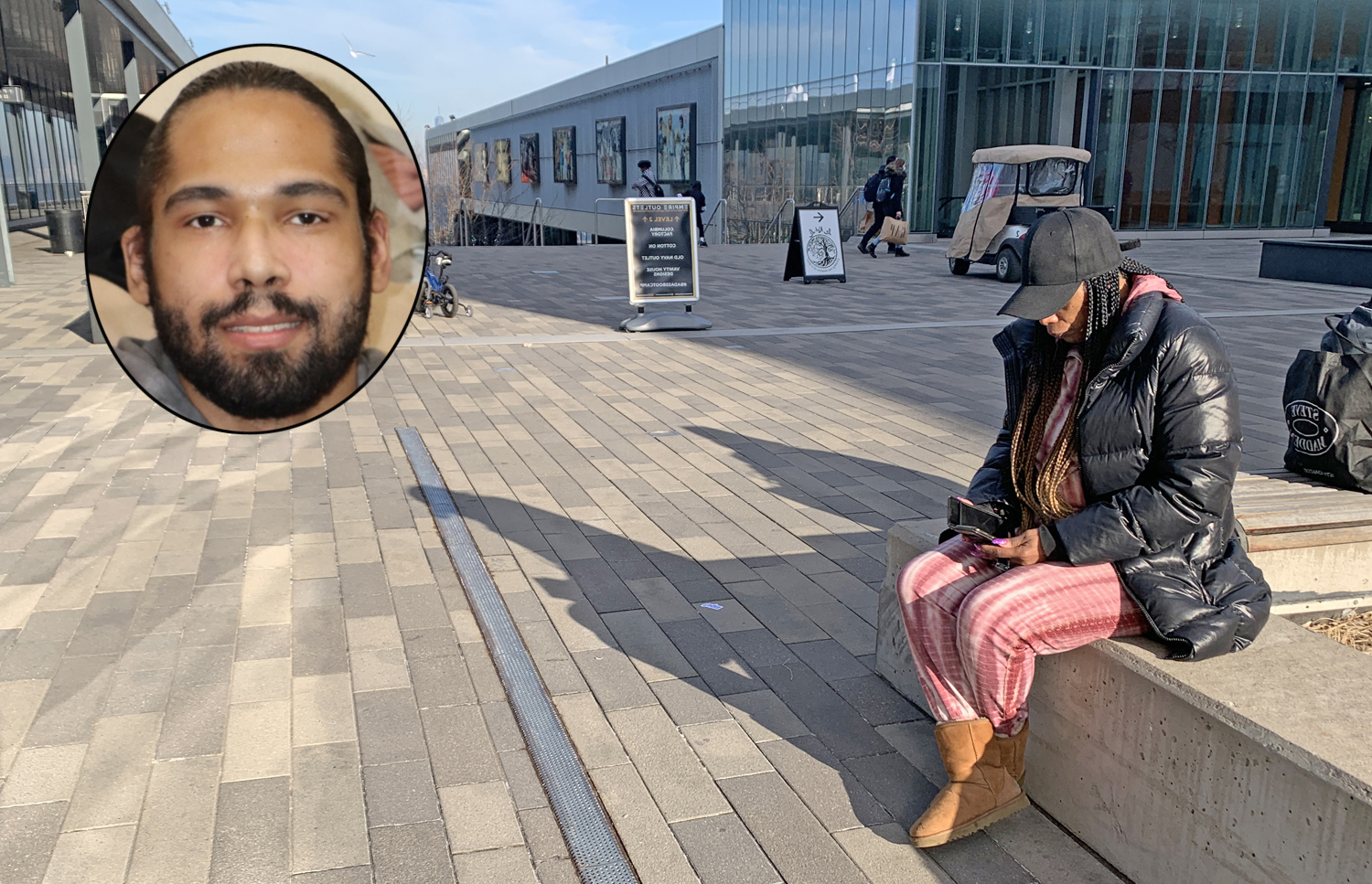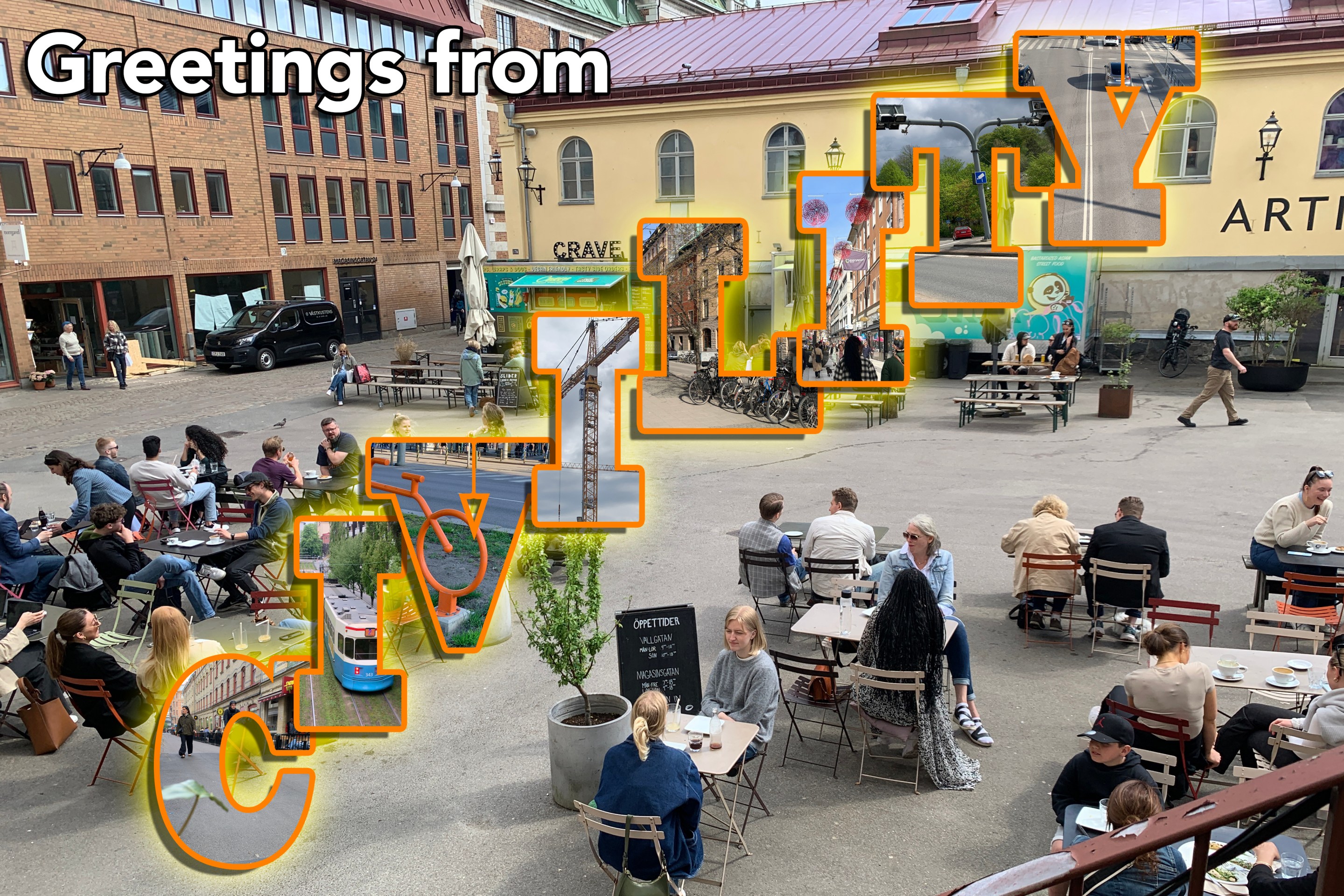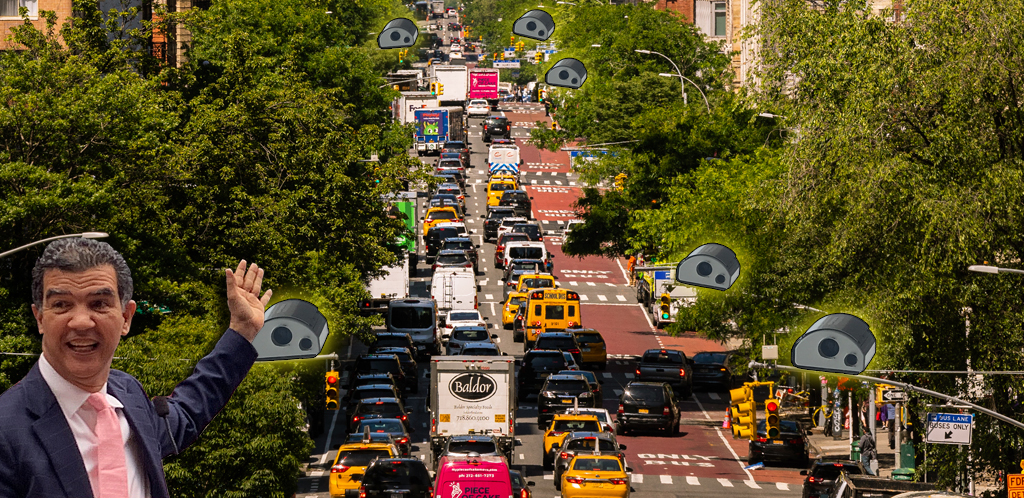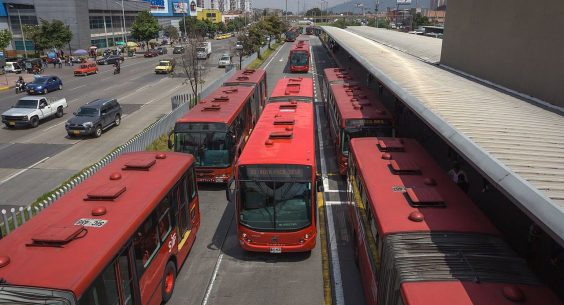A hit-and-run on a notoriously dangerous Brooklyn street. A suddenly retired NYPD detective. An unresponsive investigative agency. A case closed without warning. Cold conversations without answers.

It all adds up to a year of pain for Tasha Horton, whose son, Imorne, was killed by a driver on deadly Hamilton Avenue, steps from his home, exactly one year ago today. No one has been arrested. No one at the NYPD will talk about the case. And Tasha Horton is alone.
"I have nothing. I have nothing," she told Streetsblog this week as she prepared a small vigil with her two surviving children at the crash site at Court Street on Thursday at around 5:30 p.m.
"I miss him every day," she added, reluctantly scrolling through old pictures of her son on her phone. "He was always laughing, so I was always laughing. I just miss that. And I deal with this every day. Sometimes I have good days. I try not to think about it, honestly, because obviously I can think about it all day, every day. And if I do that how could I function at work or with my grand-daughter? So I try to have make the best of some days, but some days, I just really am in a rut. I can't shake it."
Losing her oldest child was incomprehensible for Horton, who works for the Department of Citywide Administrative Services. But nothing about the events of Feb. 24, 2021 prepared her for the lack of professionalism of the NYPD, she said.
Horton said that very early in the case, an NYPD investigator told her that the driver of the car had been identified and would be questioned — and that it would not be long before the case was solved. But that investigator retired, Horton said, and she didn't learn about it until months and months had passed.
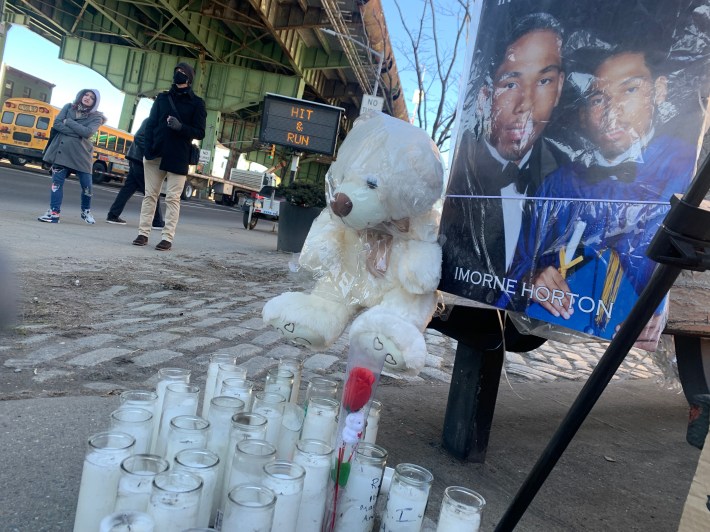
"I never heard anything," she said. "Finally, my son called and was told, 'Oh, that detective retired.' The whole time, they had somebody else working on the case, but I never spoke to him. So maybe he thinks that I didn't care? Then, about two months ago, I called again and this time he said to me, 'I'm closing the case with no charges.' No charges? They said they knew who the driver was."
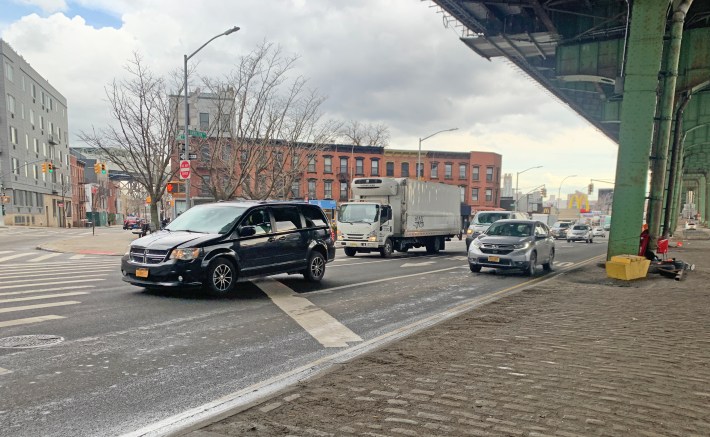
(The NYPD declined to answer any of Streetsblog's questions about the case, or even say whether the case remains open or whether it has been closed, as Horton asserts. The agency refused to grant an interview with any Collision Investigation Squad or Transportation Bureau officials, despite numerous requests over the last few weeks. The agency would not provide the CIS case file, which Streetsblog is now seeking under the Freedom of Information Law.)
It is rare for the NYPD to arrest a hit-and-run driver. As Streetsblog has reported, in 2020 (the last year for which there is full data), there were 39,299 hit-and-run crashes involving injuries or damage to property. Cops arrested just 351 people, or 0.8 percent of the cases. Police are better at solving hit-and-run crashes that cause serious injuries or deaths, though there are fewer of those. In 2021, there were 93 such crashes, and cops ended up making 24 arrests, or just over 25 percent of the time.
In the same month that Imorne Horton was killed, there were six other hit-and-run crashes that left a person dead or critically injured. In the year since, cops have arrested just two people, with only one case marked as "solved," according to the NYPD traffic data portal.
Horton's story is similar to those told by so many victims of traffic violence — stories of incomplete police investigations, cases closed without notice, insensitivity and victim-blaming. It's why so many members of Families for Safe Streets and other advocacy groups called for crashes to be investigated by the Department of Transportation instead of the NYPD in hopes that non-law-enforcement personnel would be more sensitive to victims.
Bernadette Karna was severely injured in a June, 2016 crash as she crossed Third Ave at 41st Street in Manhattan on her way to work. She suffered crushed ribs, fractures to her back, shoulder, knee and foot, and required surgical repairs with metal plates. She was in physical therapy for nearly two years. And that pain was only prologue.
"Despite the horrors that I endured, nothing prepared me for the utter failure of the NYPD to investigate my crash," she told Streetsblog last year. "I relied on the police to do a complete investigation. However, my case wasn’t investigated thoroughly. The precinct detective assigned to my case went on a two-week vacation during the critical investigative period, and closed my case after four months. No charges were filed and he retired shortly thereafter without any further investigation."
Only after sharing her story with the New York Times and the City Council did the NYPD Collision Investigation Squad reopen, but then closed it again without pressing any charges — even though cops knew the owner of the SUV that hit Karna.
"It is not acceptable that the driver can simply deny responsibility, and refuse to cooperate with police, without any consequences," she said.
But in Horton's case, the pain is exacerbated by the "what ifs" and the moments she'll never share with her son. On the day he was killed, she hadn't spoken to him for four or five days — an unusually long time, she said.
"Sometimes, I would not call him for a few days because he had this thing — I don't know if that's just how some kids are or whatever — where he would sometimes go a few days without calling me. So sometimes I didn't call him because I wanted him to call. I wanted him to get in the habit because, you know, I'm going to be old soon. You gotta call me and check on me. You know what I mean? So I just wanted him to get into the habit of that, but that's why it was like four or five days because normally we would speak almost every day.
"And then I heard that he'd been killed, so that hurt me, too."
Not getting regular updates — or even any news — from the police made Horton feel more alone, and angry.
"They know who it is because I was told that they knew who it was," he said. "And come on, you're driving — you can't say, 'I didn't know I hit somebody.' If you roll over something in the street, you're gonna look in your rear-view mirror to see what it was. That's like automatic. There's no way that anybody can say, 'Well, I don't know.' That just doesn't sit well with me. And the police are really just gonna run with that?"
Horton admits to being a "bit of a loner," but without Imorne, she has become increasingly isolated. The politicians who attended a vigil days after the crash have moved. In Brad Lander's case, to higher office. In Carlos Menchaca's case, to political retirement. Whatever political pressure was brought to bear on the Department of Transportation has faded. The intersection was not redesigned in any way, save a minor change to the timing of the light, which still affords pedestrians far too little time to cross, leading many pedestrians to cross the three high-speed lanes of Hamilton Avenue against the light as drivers race between Bay Ridge and the Battery Tunnel.
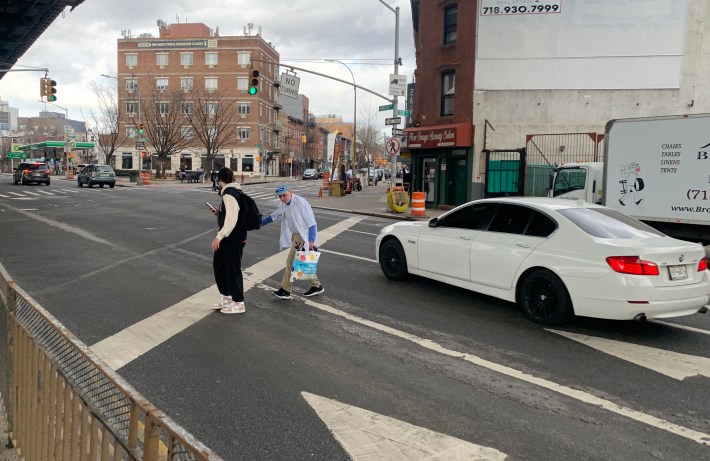
In November, 2014, the city put out a comprehensive report [PDF] that found "inadequate pedestrian crossings, pedestrian facilities in disrepair and insufficient lighting" — conditions that have not changed. That report had recommended more pedestrian space, traffic-calming measures, additional pedestrian crossings (perhaps elevated), new and better medians under the highway (preferably planted).
In the period between the late 2014 report and the death of Imorne Horton in February, 2021, there were 888 reported crashes on both sides of Hamilton Avenue in just the four blocks between Smith and Henry streets, injuring seven cyclists, 15 pedestrians and 143 motorists.
In the one year since the death of Imorne Horton, there were 19 more crashes on just those four blocks, injuring a pedestrian and 10 motorists.
The agency claims it has a plan to expand some fencing on the avenue's wide and disgusting median to discourage crossing against the light, but no changes were visible when Streetsblog visited the crash site on Wednesday.
“The DOT will continue considering further enhancements," said the agency spokesman Vin Barone. "Every traffic death is avoidable and our thoughts are with the family of Imorne Horton on this day.”
Those bureaucratic well wishes may be the only comfort Horton gets as she approaches the one-year anniversary of the death of her 31-year-old teddy bear of a son.
"Honestly, nobody even calls me," she said. "It used to bother me, but then it kind of made me think like, 'Okay, it's my kid. It's nobody else's. They're gonna go on with their life. I'm the one who has to deal with all this stuff.' So I mean, it's kind of understandable. But then every once in a while, I'll get a text, 'I'm thinking about you' with a heart emoji or something. You can't tell through a text if I'm so devastated and so depressed that I feel like doing something to myself?"
Horton doesn't even know if hearing about an arrest will bring her any solace.
"My feelings are very mixed," she said. "I don't really know what kind of feeling I have anymore. Like it's just I feel depleted. I can't even look at his pictures anymore. It's like having eye contact; it gives me immediate anxiety. I just wish that he was still here."
